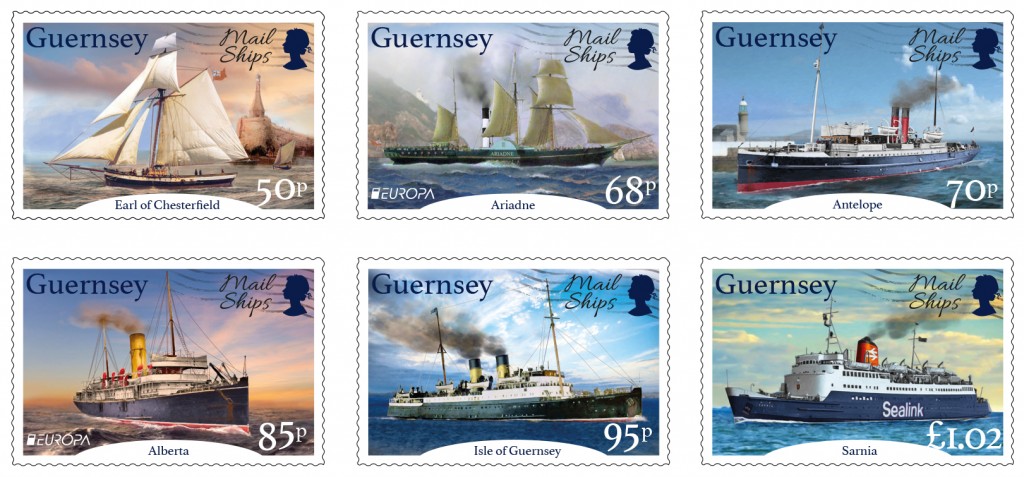Bridget Yabsley, head of philatelic at Guernsey Post, explained: – “Before the arrival of air mail in the 20th century, the only option for sending post to the Channel Islands was by sea – and crossing the busy Channel could be hazardous. As a result, the English Government ordered the establishment of the Channel Islands Packet Service; in 1794, two identical 50-plus foot-long, 80-ton cutters began servicing the route from Weymouth to the Channel Islands, a passage scheduled to take 16 hours, which sailed alternately every Thursday. The rates of postage were set at 2d. for a single letter, 4d. for a double letter and 6d. for a treble letter.
“The construction of steamships from the 1800s provided fast passenger and cargo links with the islands and the services were run by independent operators. We are delighted to depict some of these vessels on our stamps for the Europa issue.”
The stamps: –
At 78 tons, the Earl of Chesterfield (50p stamp), a cutter built of oak, was one of the first vessels to provide the mail service, and was commanded by Captain James Wood. She continued to do so until 29 October 1811 when, on her way to Guernsey, she was attacked and captured by a Cherbourg privateer, L’Epervier.
In 1823 the Ariadne (68p stamp) started on the route from Southampton to Guernsey and Jersey. Built by William Evans of Rotherhithe, the three-mast paddle steamer was commanded by J Bazin, a well-known Guernsey captain.
The Antelope (70p stamp), a 672 gross tons vessel, was one of the first of three built for Great Western Railway when the Weymouth-Channel Island service began, in competition with Southampton’s. She made her maiden voyage to the Channel Islands on 3rd August 1889.
The Alberta (85p stamp), a single-funnel vessel built in 1900, had a speed of 19 and a half knots and maintained the link between Southampton and the Channel Islands for London & South Western Railway for thirty years, including during the Great War.
Isle of Guernsey (95p stamp) was completed in 1930 and was one of the first ships to be fitted with a sonar that could determine the depth of the water. She travelled regularly across the Channel until the outbreak of the Second World War when she was converted into a hospital ship. She served at the evacuation of Dunkirk and although attacked by German aircraft and damaged by shrapnel, shells and bullets, she managed to avoid the bombs.
Completing the set, the Sarnia (£1.02p stamp), with her striking coloured hulls and funnels, is one of the most impressive of all the mail ships to have served the Channel Islands. The 308-foot ship with a tonnage of 3989 entered service in June 1961, launched by Lady Arnold, the wife of Sir William Arnold, who was Bailiff of Guernsey at that time.
The stamp products are available to order now by visiting www.guernseystamps.com or contacting the bureau on +44 (0) 1481 716486.

 Åland
Åland  Faroe Islands
Faroe Islands  Gibraltar
Gibraltar  Greenland
Greenland  Guernsey
Guernsey  Isle of Man
Isle of Man  Jersey
Jersey  Liechtenstein
Liechtenstein  Luxembourg
Luxembourg  Malta
Malta  Monaco
Monaco  Vatican City
Vatican City 
